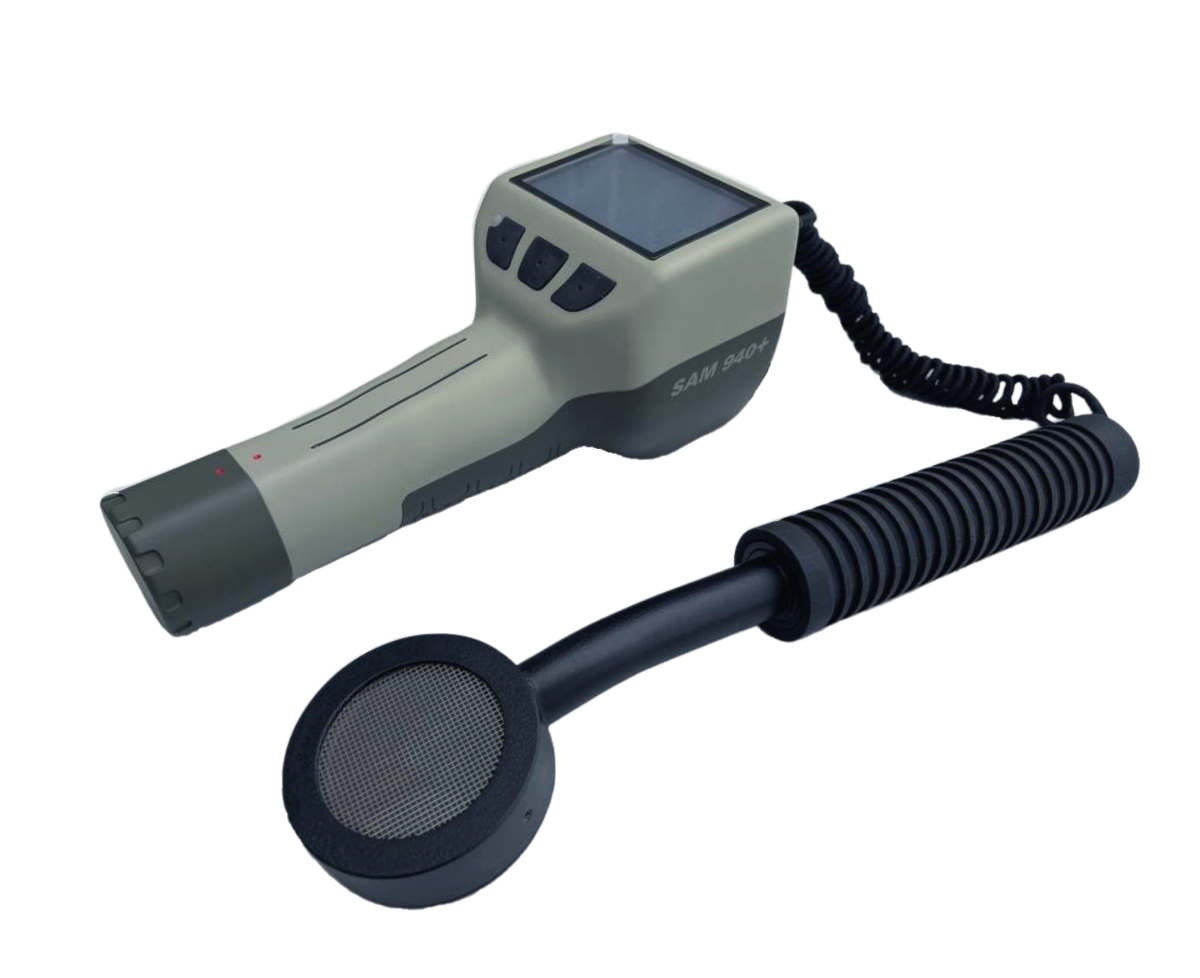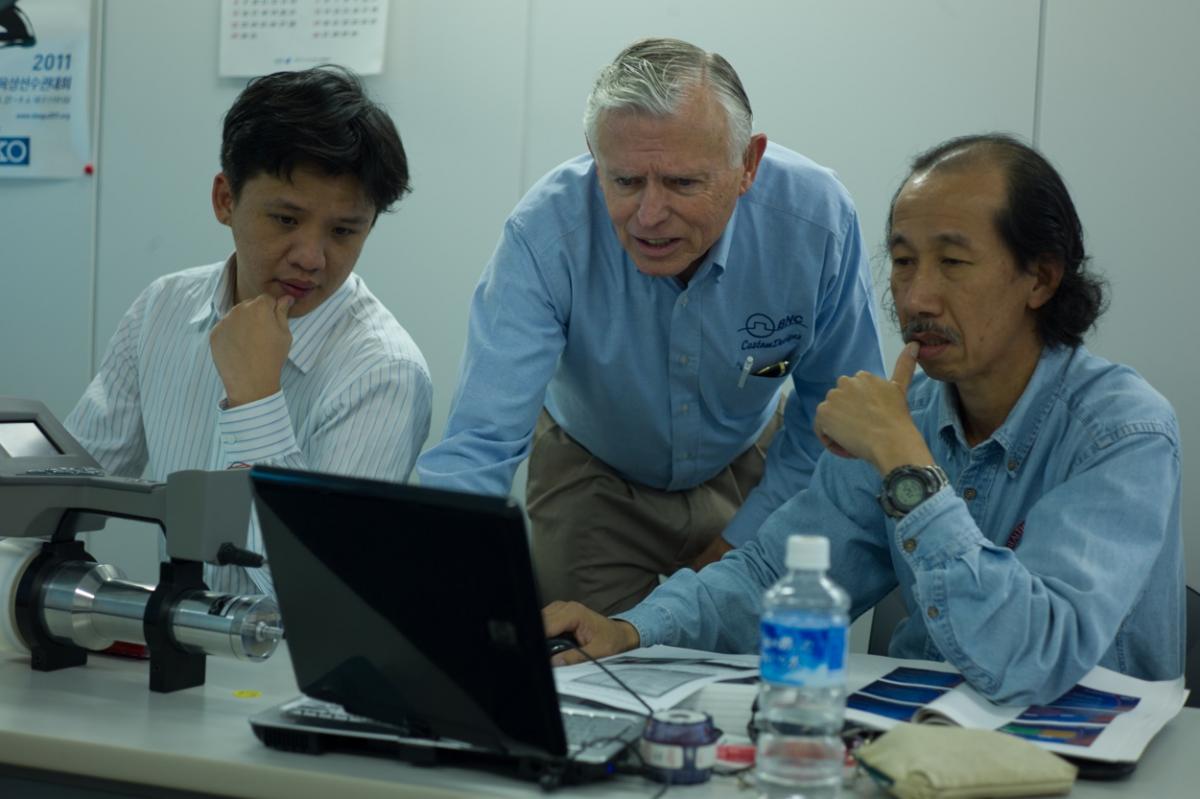November 5th, 2021 - The Various Detectors of a Radioisotope Identification Device (RIID)
A high-powered RIID completely redefines a response team’s approach to radioactively hazardous events. This is owed to their robust digital and mechanical properties: for BNC’s SAM III series [SAM III link] in particular, the accessible touchscreen software provides easy control over the unit’s layered detection and identification subroutines.
But what justifies the use of a RIID over a unit with a smaller form factor, such as a radiation pager or handheld probe? Why should you consider acquiring a RIID? And what makes any one identifier great? The answer: identifiers seamlessly integrate multiple types of detectors in order to cover a wide array of potential applications, and places that coverage into just one hand.

Geiger–Müller Counter
A Geiger–Müller counter, frequently called a Geiger counter, is one of the more popular detectors available for radiation, thanks to popular media. “Painted gray, clicks when close to a radioactive source, and a gauge with a shaky needle wobbles (hopefully!) out of the red--” if someone was prompted to describe a “radiation detector,” this would be a common interpretation. In practice, a Geiger counter uses a gas and the power of ionization to create the output pulse carrying its information.
Despite the historied nature of Geiger counters, however, this method of detection remains essential in the 21st Century. For RIIDs in particular, the housed Geiger Counter accurately provides two profoundly important metrics for the sake of radiation detection and prevention: Dose Rate and Count Rate.
The most notable detector within a RIID, the scintillator, is also capable of attaining counts and dose rate. The output pulse of a Geiger counter offers two distinct advantages, however, that translate into critical functions for the device: firstly, a Geiger counter is able to read out a higher count and dose rate than most scintillators, a trait which helps inform the unit’s Health Safety Alarm. Secondly, through a method called energy compensation, a Geiger counter can accurately associate the incoming count rate to the incoming dose rate.
Energy compensation, which relies on the fact that these counters do not measure the energy of radiation, likewise poses a gap in detection capabilities: Geiger counters cannot properly identify the isotope of a radioactive source.
Scintillation Detector
A scintillation detector, or scintillator, powers the highly complex process of radioisotope identification within the device. They rely on scintillation crystals, a broad selection of materials that are capable of generating key information on an incoming source’s energy signature. Some of the “workhorse” scintillation crystals are Sodium Iodide (NaI), an affordable crystal that can be grown in large sizes to enhance sensitivity, and Cerium Bromide (CeBr3), a high-performance material that is capable of achieving the best resolutions.
Typically, scintillators are customized per application, and require systems of their own. They require a photomultiplier to amplify very weak signals, and a multichannel analyzer to perform an identification method called Pulse Height Analysis--where the pulse read out from a scintillator is arranged into different energy channels for the sake of discrimination.
RIIDs are capable of housing and powering these supporting electronics while remaining mobile. When a radioactive source is properly identified, response teams can send the information to physicists within response centers (for the SAM III series in particular, by utilizing the one-click reachback included in the device). The isotope discovered, alongside its location and intensity, is essential for determining the appropriate next steps for a safe and effective response to the presence of harmful radiation.

Neutron Detector
Although extremely rare to encounter naturally, the penetrative and highly intense nature of neutron radiation has begun a push to incorporate neutron detection capabilities into newer RIID models.
While it is possible for RIIDs to contain a new detector for neutron radiation, such as a domino neutron detector (solid-state detectors with a thin form factor) or He3 Neutron Detectors (a very standard, if now scarce solution), it is also possible to use a scintillator that can discriminate between Gamma and Neutron. CLLBC, for instance, is one such material, and is commercially available as an option in BNC’s SAM 940Plus [link].
Conclusion
A top level description of the detectors within a RIID may be inadequate for expressing the robust nature of these devices; through algorithms, tightly-knit configurations and many decades of improvements, BNC’s units like the SAM 950 and SAM 940Plus provide the key functions of all these parts without placing any additional tasks or efforts on response personnel.
